Best carbon road bikes: Our pick of the best racing and endurance road bikes
Carbon road bikes combine meticulous weight saving, geometry tweaking and aerodynamic sculpting to rule the road
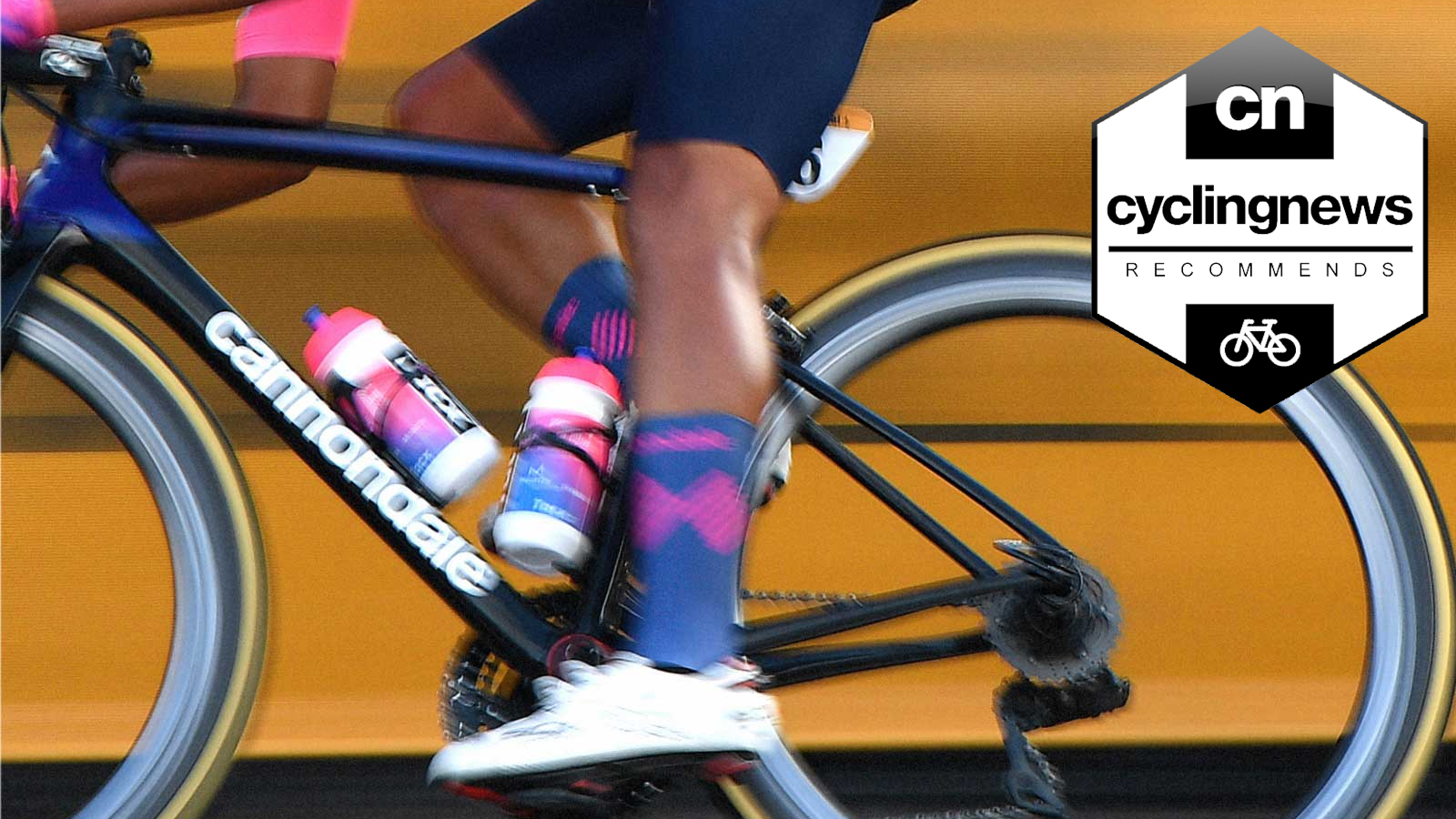
Carbon fibre is a bit of a wonder material because it can be moulded into just about any shape, and tuned to be stiff in one plane and flexible in another. With these properties, it's heavily used throughout the bike industry and we see it in everything from frames down to brake levers. There are advocates of bikes made from steel, titanium and aluminium, but the best road bikes are most commonly made from carbon fibre. For evidence, look no further than the bikes ridden in the WorldTour.
There is no shortage of remarkable bikes made from aluminium, steel and titanium, but with its stiffness, strength and malleability, carbon fibre reigns supreme in road bike technology. Once a reserve for top tier racing bikes, advances in carbon production and technology has resulted in carbon being utilised across every cycling discipline from the best lightweight bikes to full suspension mountain bikes and surpassing the performance possible with metal tubes.
Scroll down for a pick of our favourite carbon road bikes that are available today and an overview of what to look for when choosing a carbon road bike.
Best carbon fibre race bikes
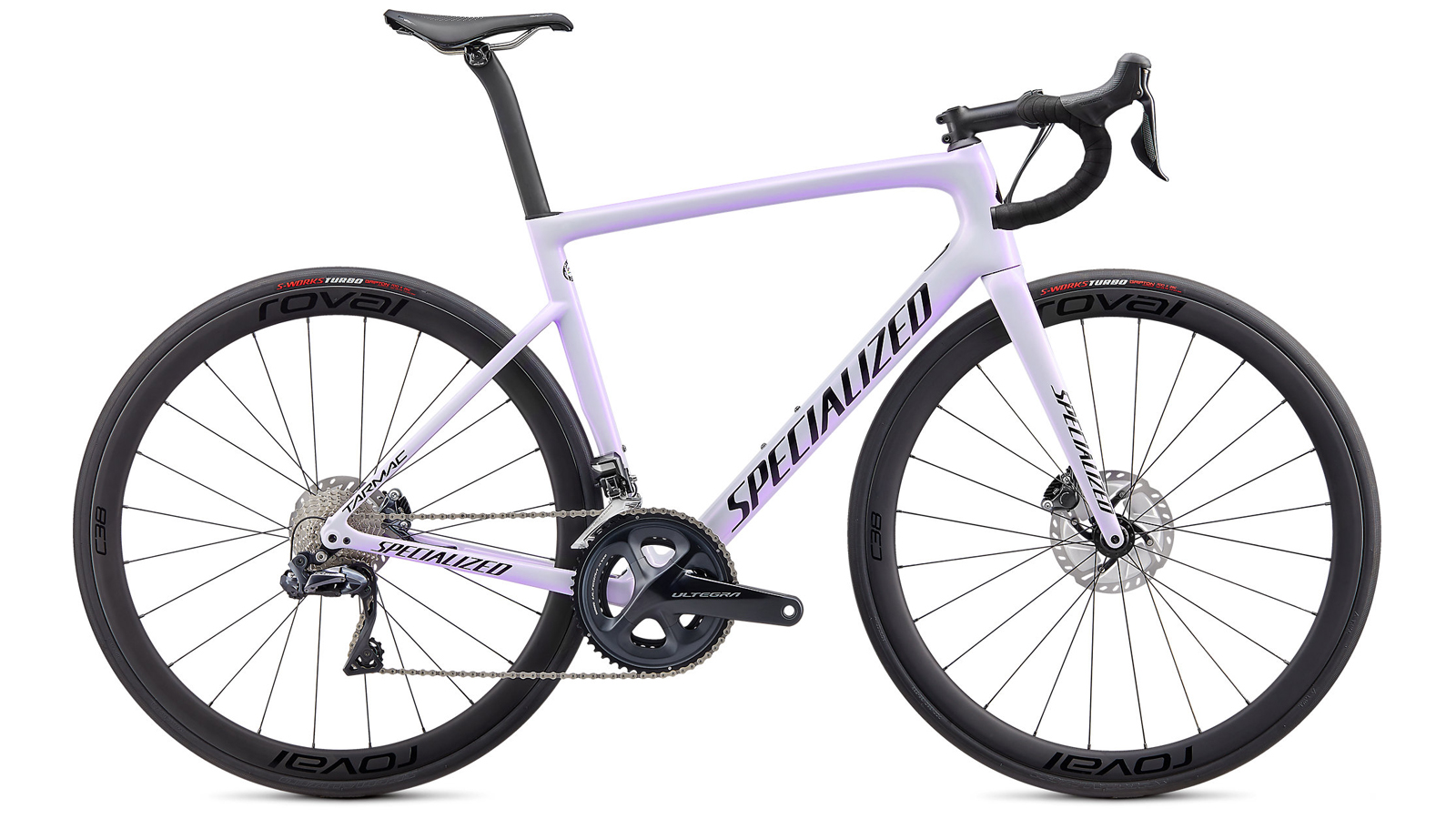
Specialized Tarmac Disc Expert
Specifications
Reasons to buy
Reasons to avoid
We're up to the SL6 version of the Specialized Tarmac, and the current frameset has lost a bit of weight and the tubing profiles are a bit boxier. The chainstays have been dropped drastically, and the back of the seat tube and seat post are now flat, a well-tested way to introduce compliance to the rear end.
Introduced a few iterations ago, the new Tarmac is based around what Specialized calls Rider-First Engineering, each frame size is built with a specific geometry, layup and tube shapes, meaning gone are the days of the ultra-stiff XS and noodly XL frames. Also gone are the gender-specific geometries, the only difference between the men's and women's versions are the touchpoints and cranks.
Specialized tell us the frame is more aero too, claiming the new Tarmac is 45-seconds faster over 45km compared to 'other lightweight bikes in the same category'. Only available with disc brakes for 2020, this has allowed the brand to balloon the max tire clearance to 30mm. The Expert spec comes with a Shimano Ultegra mechanical groupset, Roval C38 carbon wheels finished in with S-Works Turbo 120TPI rubber and one of our favourite paint jobs of the bunch.
Raced by: Bora-Hansgrohe, Deceuninck-QuickStep, Boels Dolmans
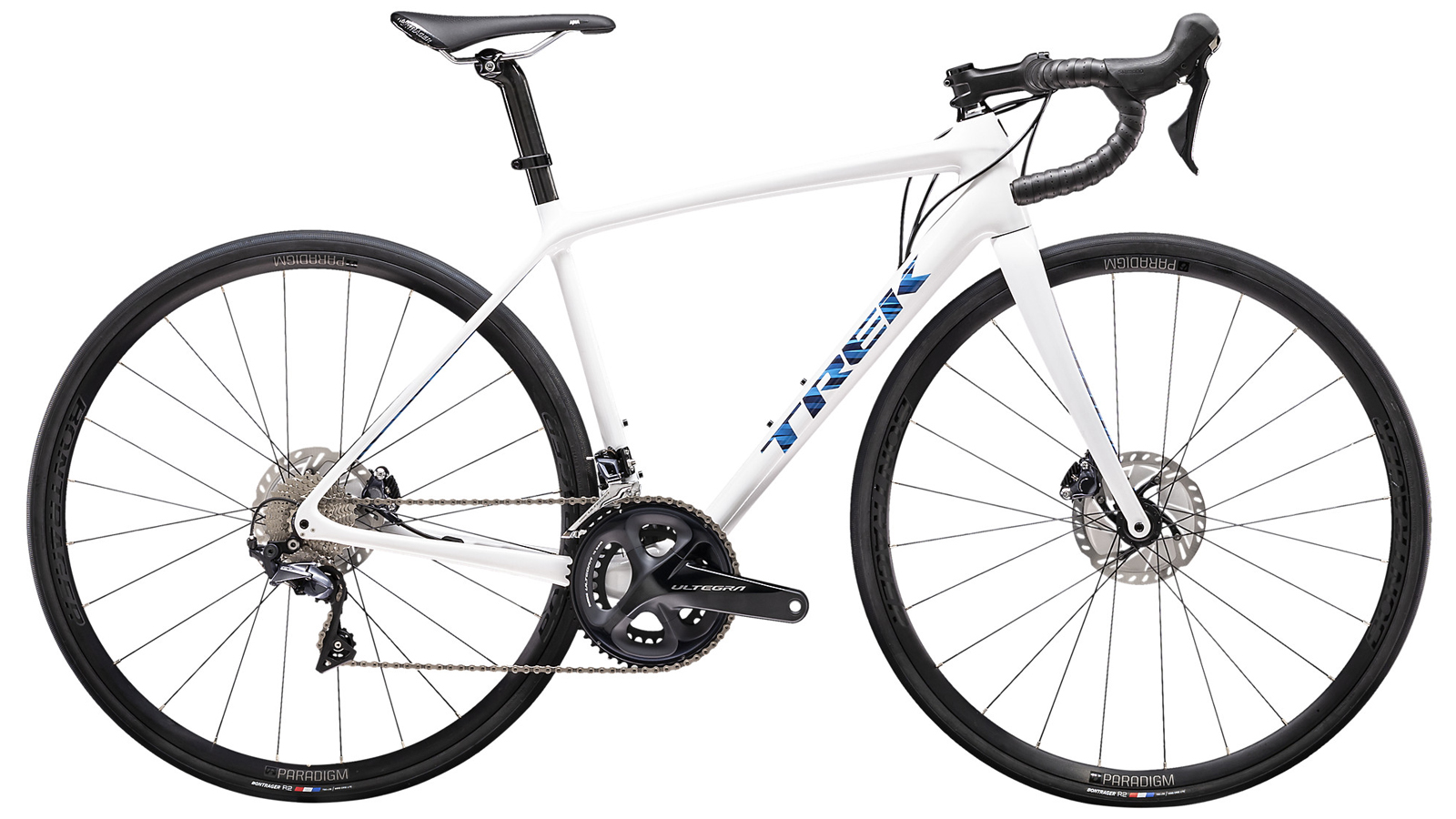
Trek Emonda SL 6 Disc
Specifications
Reasons to buy
Reasons to avoid
The Emonda is Trek's lightweight carbon road frame, and the top-end SLR version is one of the lightest framesets you can buy. While the SL version doesn't get the 600-series carbon and ultralight paint of the SLR trim, it's no slouch on the scale. Only available in the brands H2 more relaxed fit, the Disc version of the frame is made using the brand's second-tier OCLV 500 carbon.
At the back, the Emonda uses a seat mast and cap, which adds some vertical compliance, however, it does limit your minimum and maximum saddle height. Tipping the scales at around 8.6kg, depending on the size, it's not the lightest bike on the market but considering the price, it is well specced.
The latest version of the Emonda SL is noticeably stiffer and leads to a lively road feel, the stable BB creates a tight pedalling feel. Trek still hasn't applied its ISO-speed technology to the Emonda, and with the additional stiffness in the frame, some feedback from the road makes it through to your body, especially through the handlebars.
The Emonda SL is also specced with a Shimano Ultegra groupset and Bontrager Paradigm Disc tubeless-ready wheels; we feel it demonstrates decent value for money.
Raced by: Trek-Segafredo, Trek-Segafredo Women
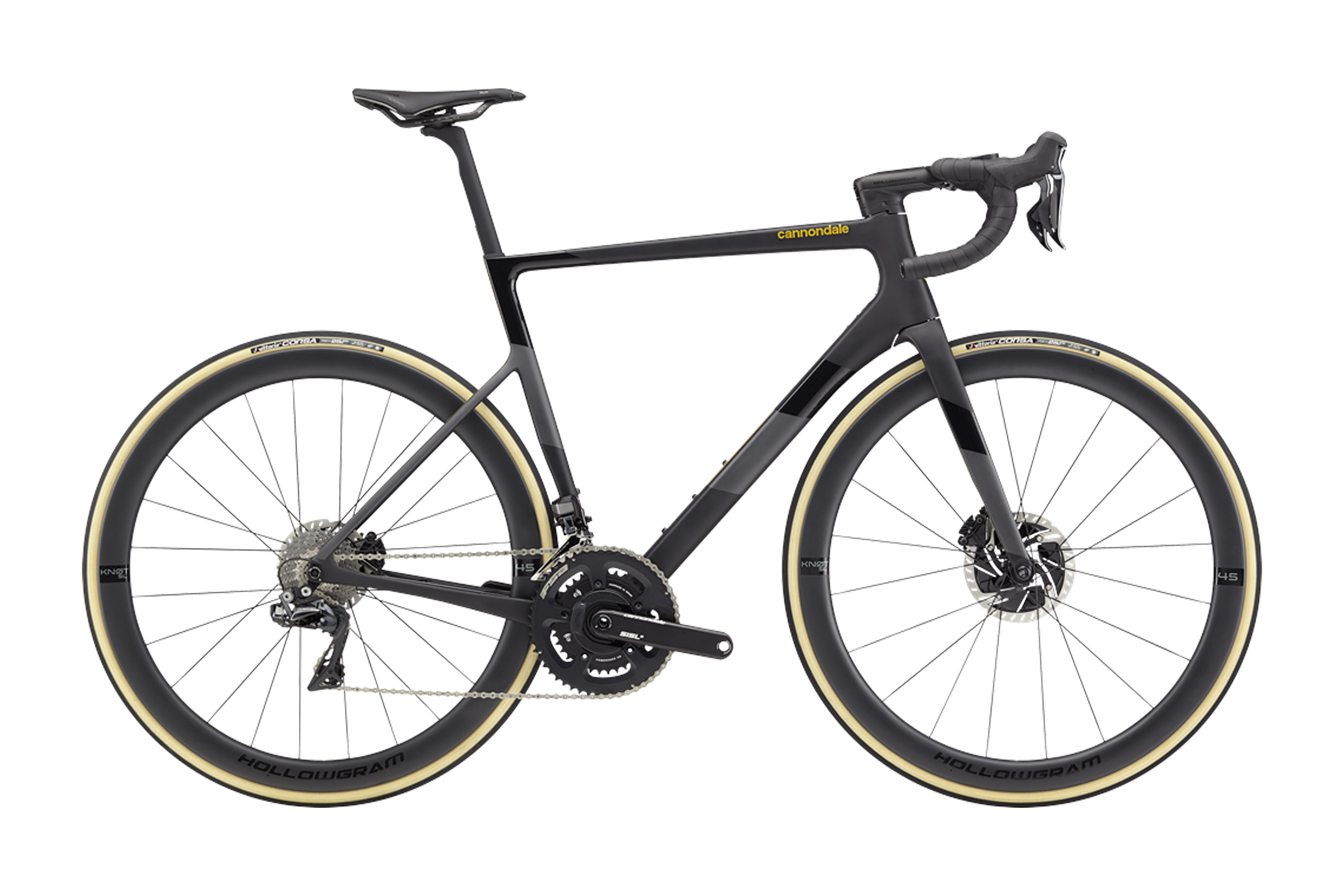
Cannondale SuperSix Evo Hi-Mod Disc
Specifications
Reasons to buy
Reasons to avoid
Launched just ahead of the 2019 Tour de France, Cannondale's latest SuperSix Evo comes complete with a first for the frame – a sloping top tube. But it's not just the death of the flat top tube, Cannondale has swapped to Kammtail tube shapes for a claimed 30 watt saving (at 48kph) over its predecessor and the brand says the new SuperSix is between nine and 40 watts faster than a range of its competitors. The frame also gets a flat-backed seat post and seat tube, and the dropped chainstays which are becoming increasingly common among carbon race bikes.
Capable of taking 30mm tyres (28mm rim brake), the new frame is claimed to weigh 886g in a size 56, painted. The rim version of the bike uses the standard open quick release dropout, however, the disc version is shod with Mavic's speed release thru-axle system which pairs an open dropout with a threaded counterpart to speed up wheel changes.
Cannondale has also opted for an integrated bar and stem and sees the brands in-house KNOT components providing the seat post and wheelset. As you'd expect for a bike in this price bracket, the 45mm deep road wheels are carbon fibre and tubeless-ready, and a Shimano Dura-Ace Di2 groupset provides the gearing. The new SuperSix EVO also comes with a Power2Max NG Eco power meter installed in the HologramSiSL2 cranks, though you'll have to pay a fee on top of the retail price to activate it.
Raced by: EF Pro Cycling
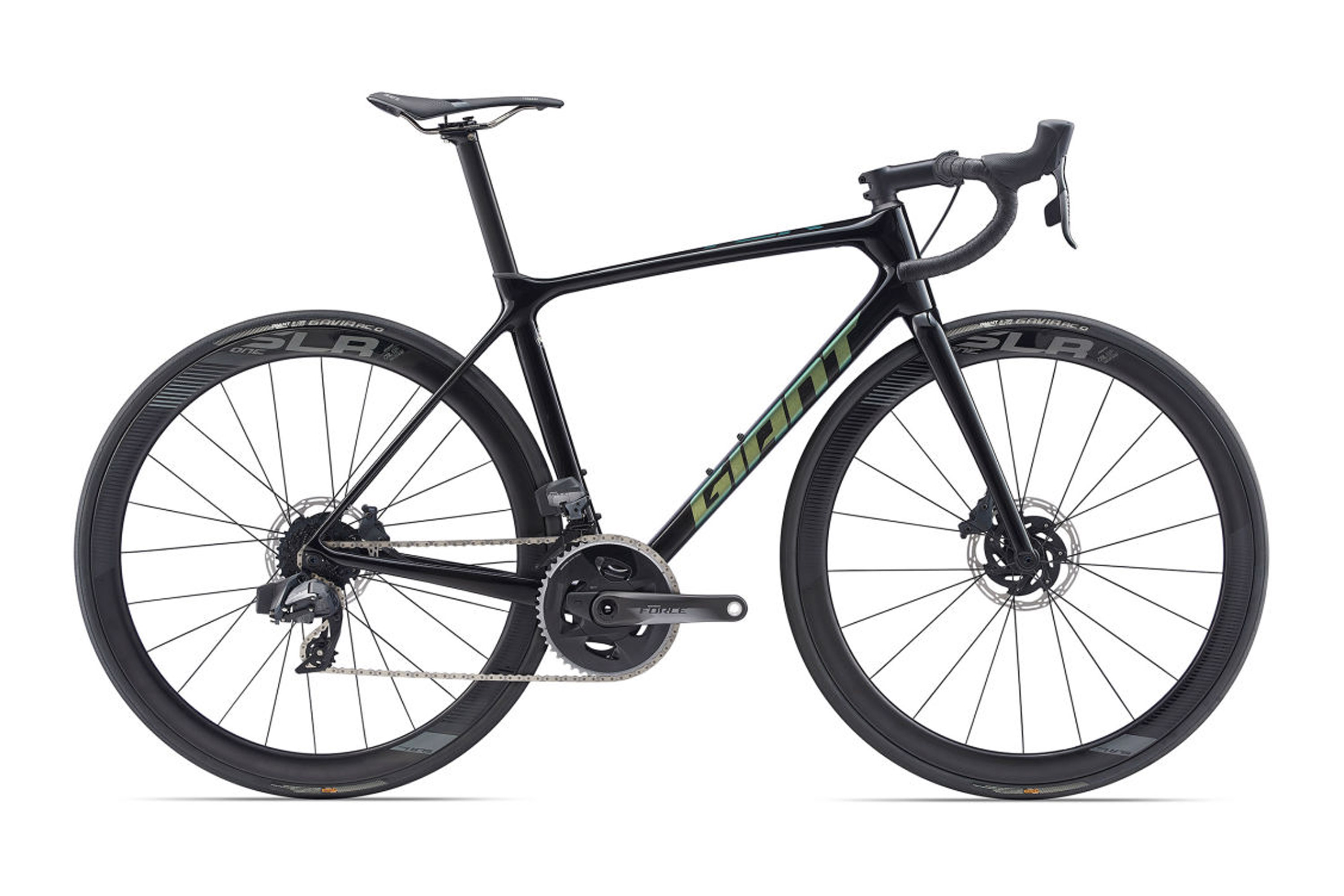
Giant TCR Advanced Pro 0 Disc
Specifications
Reasons to buy
Reasons to avoid
Giant's TCR has long been a no-nonsense performer, and the brand as a whole demonstrates top value for money. Designed around the brand's compact road geometry, the frame is built using Giant's Advanced Composite Technology, and moulded in a modified monocoque construction — meaning the front and rear triangles are moulded separately and then bonded together.
The TCR has always been known for its snappy ride quality and that's due in large part to its compact rear end. At the front, the TCR gets Giant's chunky Overdrive steerer which combine with the front and rear thru-axles and stiff carbon fork mean no steering input is lost to flex.
- A closer look at the new Giant TCR - Simon Geschke's 6.4kg bike
- Greg Van Avermaet's golden Giant TCR Disc - Gallery
Depending on where you live, the Advanced Pro Disc comes with either a Shimano Ultegra or SRAM Force eTap AXS drivetrain, but, regardless of your region, the wheels and tyres are tubeless-ready out of the box, meaning they come with valves and rim strips installed and Giant even gives you enough sealant to get rolling.
The Giant TCR has recently been updated, so the current model TCR is soon to be deemed 'old-hat', but that should mean discounts are readily available on what is still an excellent bike.
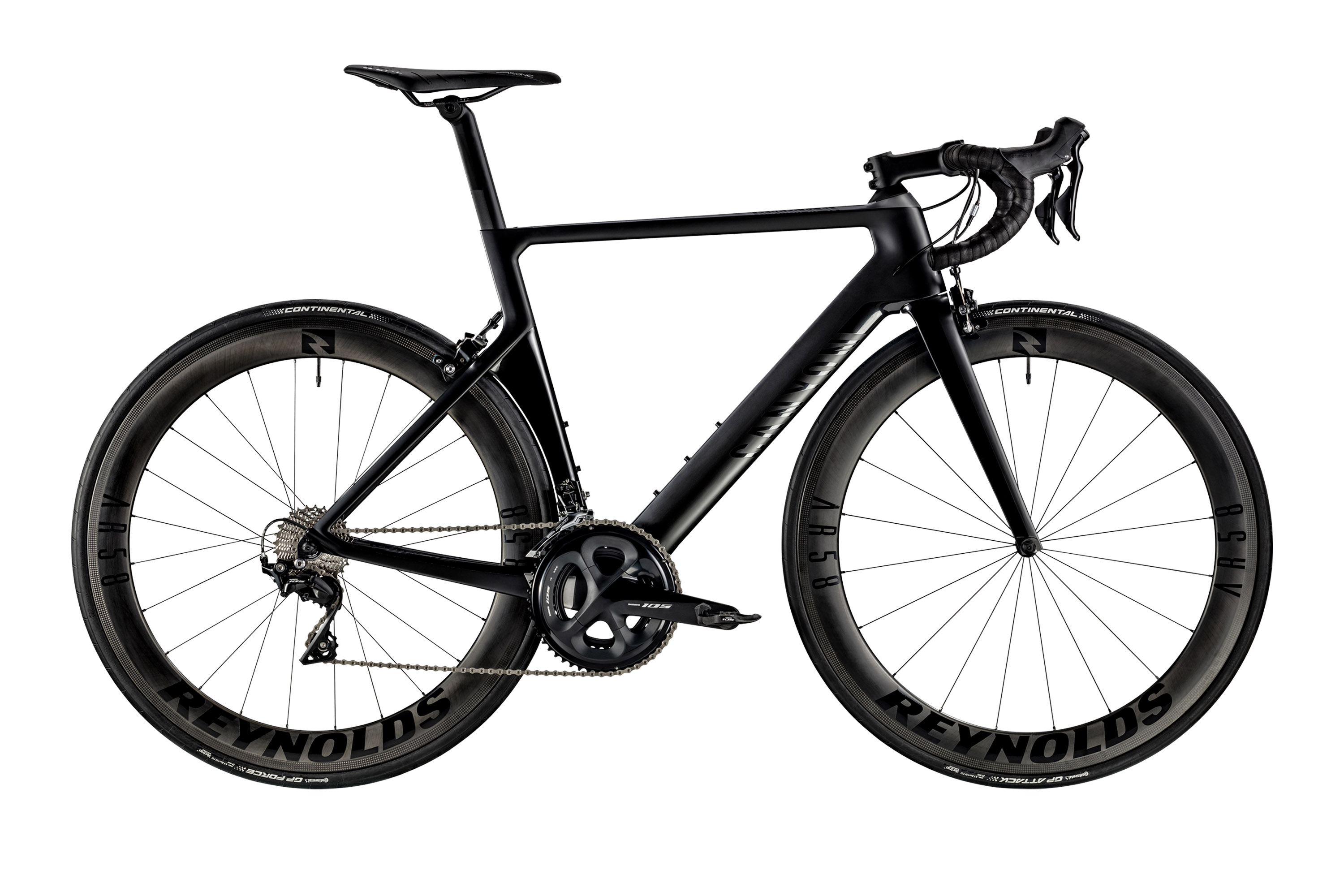
Canyon Aeroad 7.0
Specifications
Reasons to buy
Reasons to avoid
German direct-to-consumer brand Canyon has redefined the level of bike that you can get for your money, and the Aeroad 7.0 is proof. The frame and fork are made from a slightly lower grade of carbon than the SLX version that the Movistar Team rides, but beyond that it's identical. Aero tubing isn't prone to flexing, and the Aeroad offers a stiff ride, but it's still not as bone-rattling as some wind-cheating frames on the market.
For the £2,450 / $3,000 / AU$3,950 price tag, you get a Shimano 105 groupset, which offers fantastic shifting performance and reliability with 11 gears at the back. The base model of the Aeroad is only available with rim brakes; however, you still get direct-mount calipers, which are a reasonable trade-off to save a bit of cash.
While the majority of the bike is fitted with Canyon's own components, the wheels are Reynolds AR58 deep-dish carbon wheels. For the money, the Aeroad is damn hard to beat.
Raced by: Movistar Team
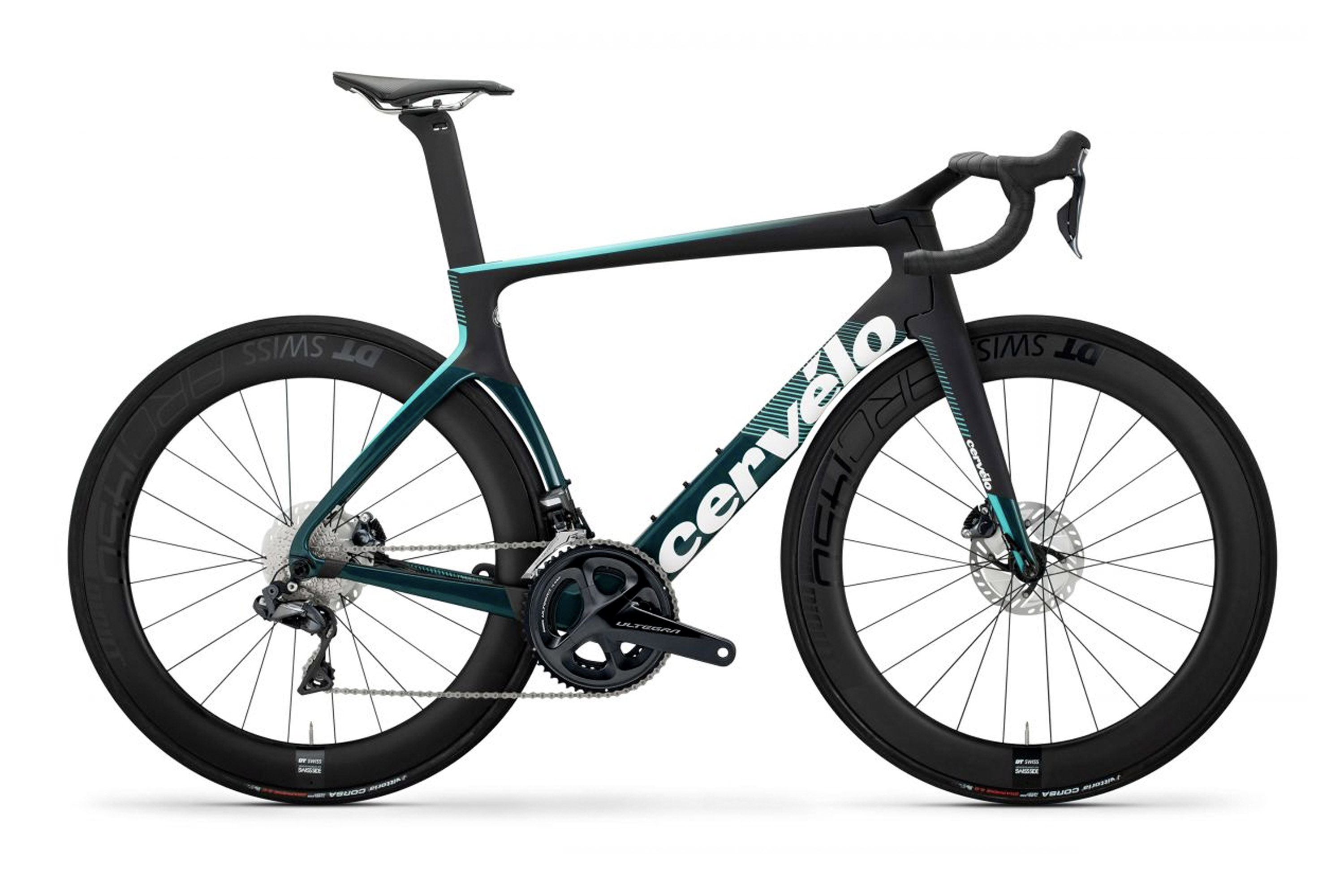
Cervelo S5
Specifications
Reasons to buy
Reasons to avoid
The third iteration of the S5 is claimed to be faster, stronger, and stiffer than its predecessor. At the front, the ultra-stiff front integrated bar and stem is more akin to the spoiler on a racing car than the front end of a bike. Combined with the proprietary external steerer tube that's designed to cheat the wind, Cervelo says as a system this creates a 17g reduction in drag when compared to a standard setup. With the cables routed completely inside the bike, you’re going to want the S5 with an electronic or wireless drivetrain, as replacing the fully internal gear and shift cables and housing will be time-consuming, at best.
Only available with disc brakes, the new frame has room for up to 30mm rubber and sees 12mm thru-axles using the quarter-turn RAT system developed by Focus, which is owned by the same parent company. With improved stiffness throughout, the robust front end makes for pinpoint cornering and allows you to push the limit through the corners. The downside is it can be a bit harsh through your hands.
Cervelo is a brand well known for its aero bikes, and the new S5 is claimed to be around 5.5-watts quicker than its predecessor, which combined with increases in stiffness throughout make it sharp and always wanting to surge forward.
It's not cheap, but for your investment, you get a Shimano Ultegra Di2 groupset and a set of DT Swiss ARC 1459 62 Disc carbon wheels.
Raced by: Team Sunweb
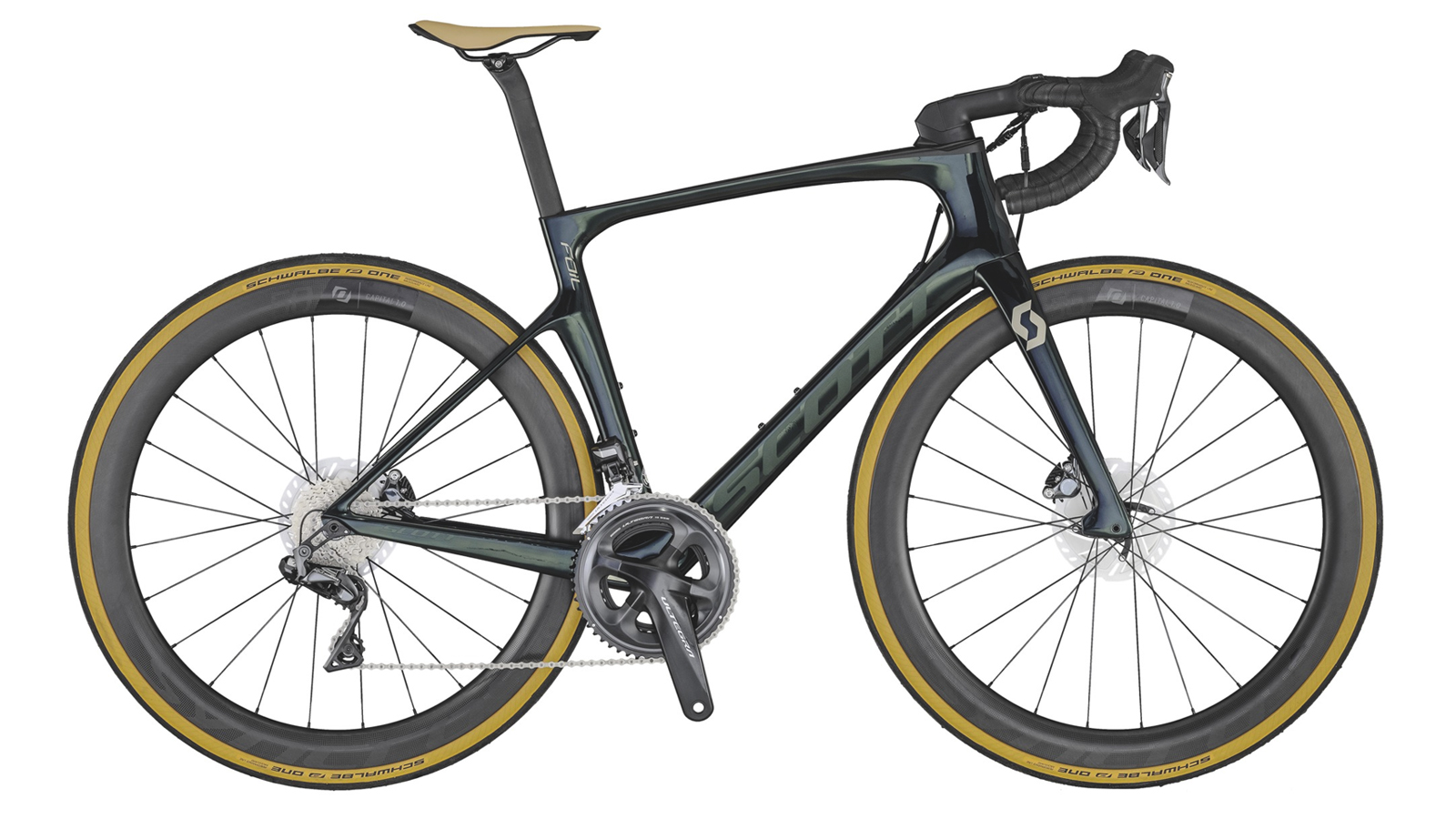
Scott Foil 10 Disc
Specifications
Reasons to buy
Reasons to avoid
The Scott Foil has come quite a long way from its origins, which were often touted as way too stiff, but ultra-responsive with zero flex or vibration dampening. In 2016, Scott completely revamped the frame and added discs in 2017, changing the layup to combat road buzz and dropping the seat stays for vertical compliance.
It's still a stiff and agile frame but lacks some of the snap of the original — not necessarily a bad thing because it makes the bike considerably more manageable, especially four hours into an all-day epic.
Available in both rim and disc versions, Scott graduated from Kammtail to aero tubing and even includes a carbon fairing to shield the disc brake caliper from the wind. The top-end RC versions of the bike come with a one-piece integrated Syncros bar and stem, which is why we like the Foil 10 Disc. Using the brands HMF carbon, it comes with a standard bar and stem and is kitted out with a Shimano Di2 Drivetrain and Syncros Carbon wheels. All that said, we’re not so sure about the brown paint job.
Race by: Mitchelton-Scott, Mitchelton-Scott women
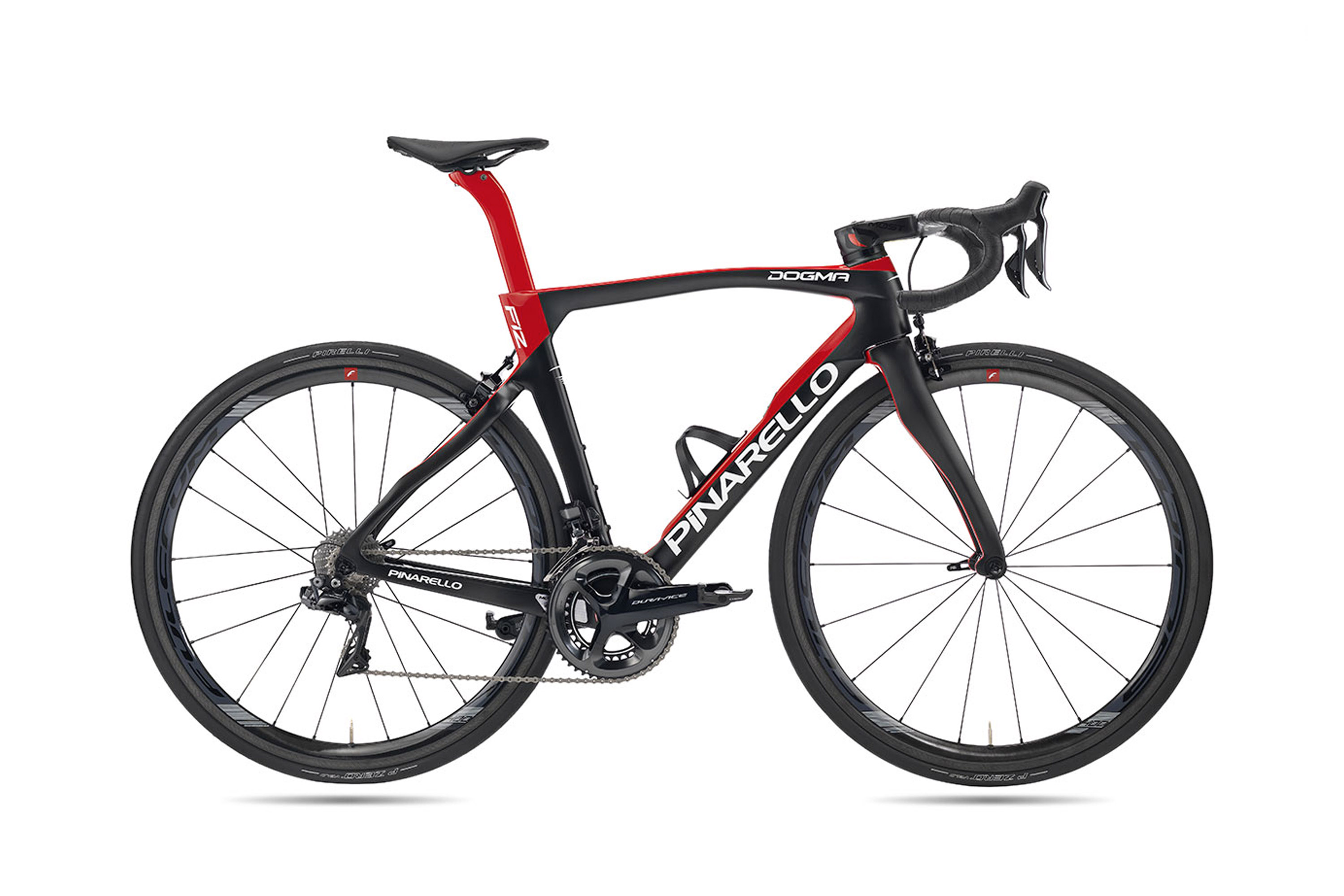
Pinarello Dogma F12 Disk
Specifications
Reasons to buy
Reasons to avoid
Say what you will about Pinarello's Dogma but it has won seven of the last 10 Tour de France's. The latest iteration of the Italian brand's aero racer is the Dogma F12, and it's the first race bike from Pinarello to come with discs from the outset. It's quite a big deal given in 2017 Fausto Pinarello famously declared he wasn't convinced high-performance bikes needed disc brakes. The rim brake version also swaps from a single bolt to direct mount brakes.
At first glance, the F12 doesn't look all that different from the F10; there are quite a few claimed improvements to aerodynamics and stiffness throughout the frame. The fork has been revamped to better combat twisting forces from the disc brake caliper, and the frames themselves are said to be 10 per cent lighter than the F10 (unpainted). Pinarello has also made refinements to its asymmetric frame design and changed to a higher grade carbon, said to amount to a 10 per cent increase in stiffness.
Now with the ability to take 30mm tyres, the F12 is designed around the Most (Pinarello's component brand) Talon bar and stem combo, which is available in 16-stem length and bar width combinations. Pinarello is making the Dogma F12 in 13 frame sizes, however, they are so expensive, most retailers seem to only be offering framesets at the time of writing.
Raced by: Team Ineos
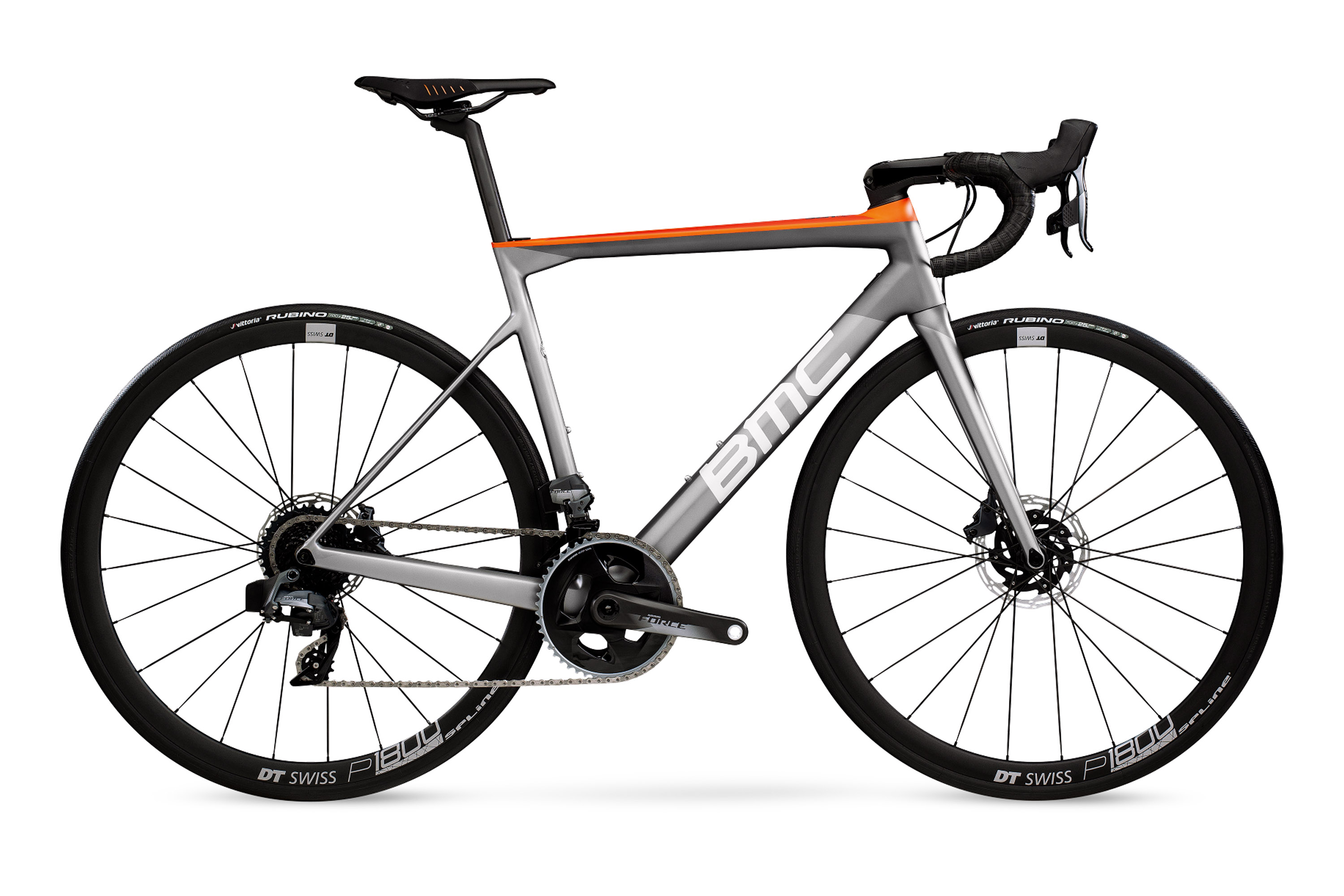
BMC Teammachine SLR02 Disc One
Specifications
Reasons to buy
Reasons to avoid
The BMC Teammachine is one of our favourite race bikes (in fact this writer owns one), and the latest iteration exemplifies the brand's prowess for engineering. As one of the first brands to adopt the dropped chainstays, the Teammachine finds a stellar balance, offering snappy power transfer, seemingly laser-guided handling while dampening a large portion of the vibration before they make it through to your touchpoints.
The big issue we have is the price tag for the range-topping SLR01 version. However SLR02 is about half the price, but still maintains the same geometry and the majority of BMC's hallmark ride characteristics. The frame itself is made with the brand's second-tier carbon, which adds a bit of weight, and doesn't absorb quite the same level of vibration.
Even at the second level of the frame, there are four specs, but it's hard to pass up the Teammachine SLR02 Disc One, complete with SRAM's shiny new Force AXS eTap wireless groupset. The bike is specced with BMC's Integrated Cockpit System, which uses a BMC stem, but standard bars, allowing for a bit of added adjustability, customisation and ease of servicing.
Raced by: NTT Pro Cycling
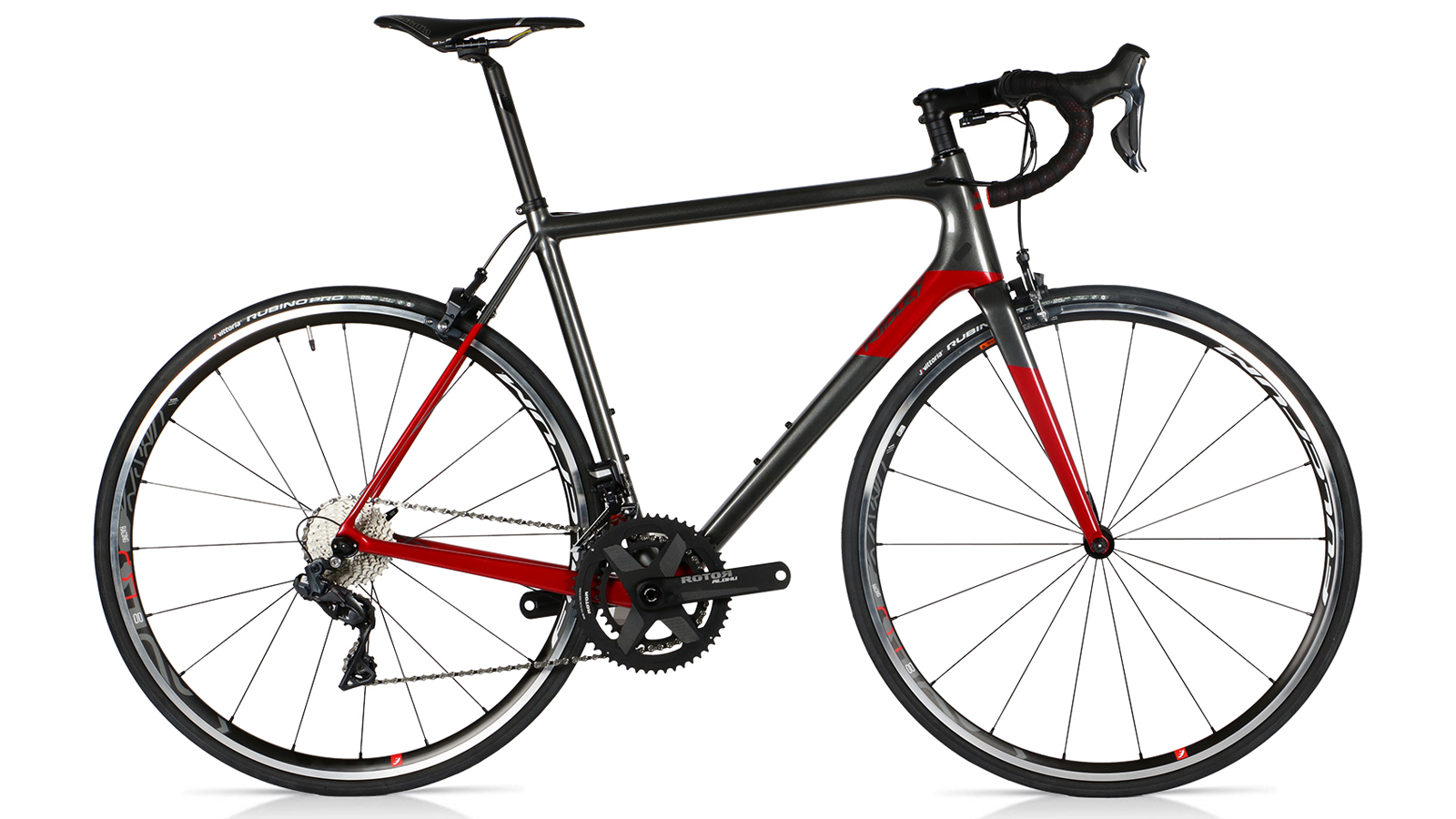
Ridley Helium SLX Ultegra Di2
Specifications
Reasons to buy
Reasons to avoid
A Ridley product manager once told me that the design ethos for its bikes come directly from its sponsored race teams. He explained the design and performance elements are balanced against what will make race mechanics want to pull their hair out and the Helium SLX exemplifies this rational. It's not the stiffest or the lightest bike on the market but the cable routing is simple and while the majority of the finishing kit comes from 4ZA, Ridley's in-house components brand, there's no proprietary anything.
The Helium SLX might not be the stiffest frame out there but it's still robust were it needs to be. Made with a mix of 60/40/30-ton high modulus carbon, Ridley subtlety transitions from round to boxy tubing in areas like the down tube and BB and even the strongest sprinters will struggle to bend the tubing under pedalling.
At the back pencil-thin seat stays soften big hits and the layup does well to absorb vibration. The geometry is racy, but not so stretched out and aggressive that the weekend warrior can't find a comfortable position.
This particular model takes the top end frame, and bolts on the latest Shimano Ultegra Di2 drivetrain and finishing kit comes from 4ZA. Ridley sends these bikes out with Fulcrum Racing 5 wheels, with the assumption being if you're buying a bike like this you probably already own a nice wheelset and may not want to pay for another. However, in Australia, Ridley bikes are only sold as framesets, and the local distributor allows customers to customise everything from drivetrain and wheels to a fully bespoke paint job.
Raced By: Lotto Soudal
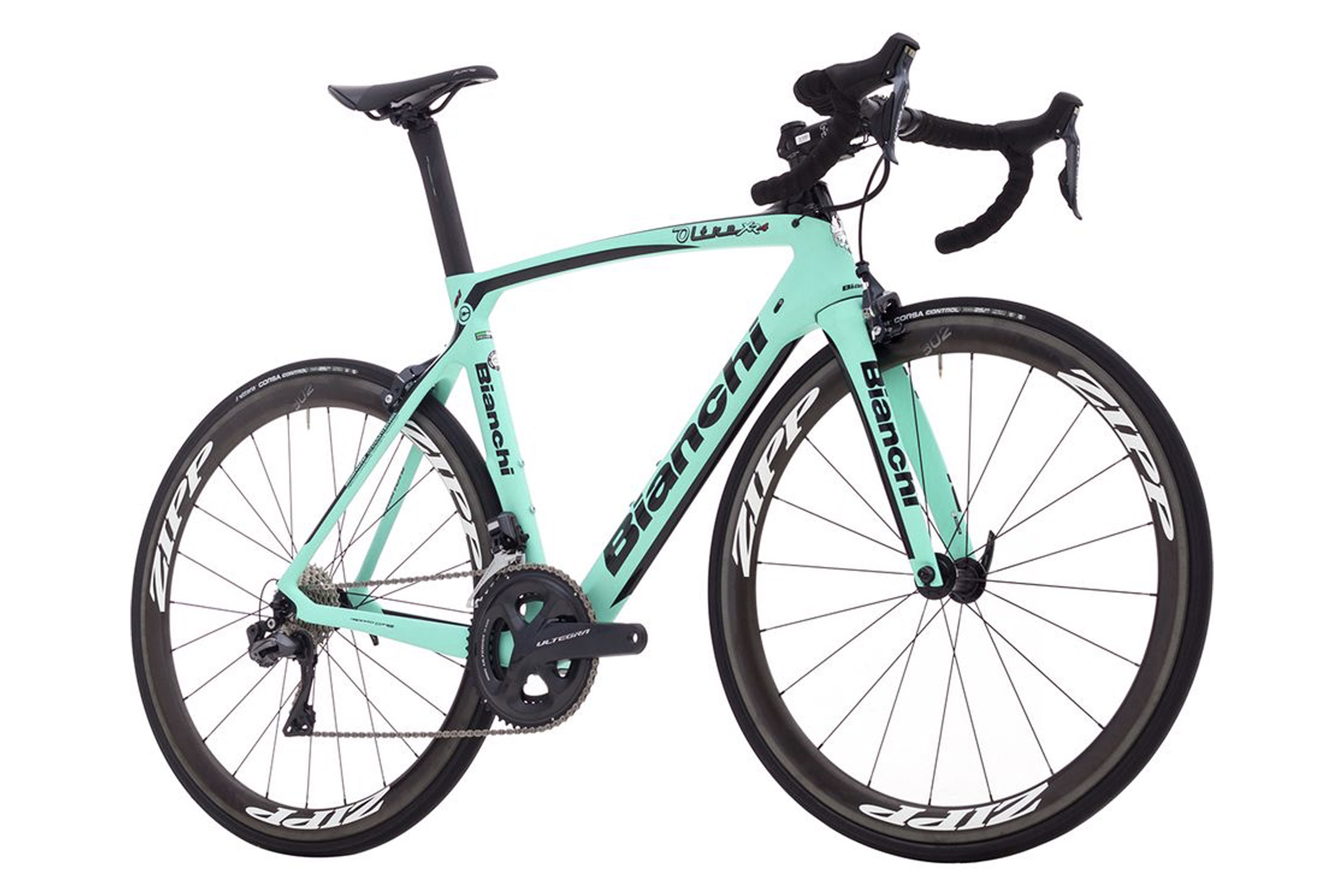
Bianchi Oltre XR4
Specifications
Reasons to buy
Reasons to avoid
Raced by the Jumbo-Visma team, Bianchi's Oltre XR4 is an eye-catching ride, especially in the trademark celeste paint job. But, it's what's hidden inside the carbon that sets this bike apart. The CV Countervail carbon architecture, which is also used by NASA, incorporates a viscoelastic resin to better dampen road vibrations coming up through the frame, which the brand says also increases stiffness. There is no doubt the frame is stiff under pedalling forces, but you can feel the difference the countervail tech makes when it comes to comfort.
The main focus of the Oltre XR4 is to slice through the wind so it's no surprise to see the cables fully hidden, with Vision's 5D ACR one-piece cockpit wrangling everything into the frame. With these properties, the Italian outfit has also made the geometry fairly unforgiving and you'll need to be flexible to find a comfortable position.
Don't mistake the Oltre XR4 for an aero bike that's just meant to go straight, it handles with cat-like reflexes. The price tag is pretty heavy and depending on where you live it may only be offered as a frameset.
Raced by: Team Jumbo-Visma
Best carbon fibre endurance bikes
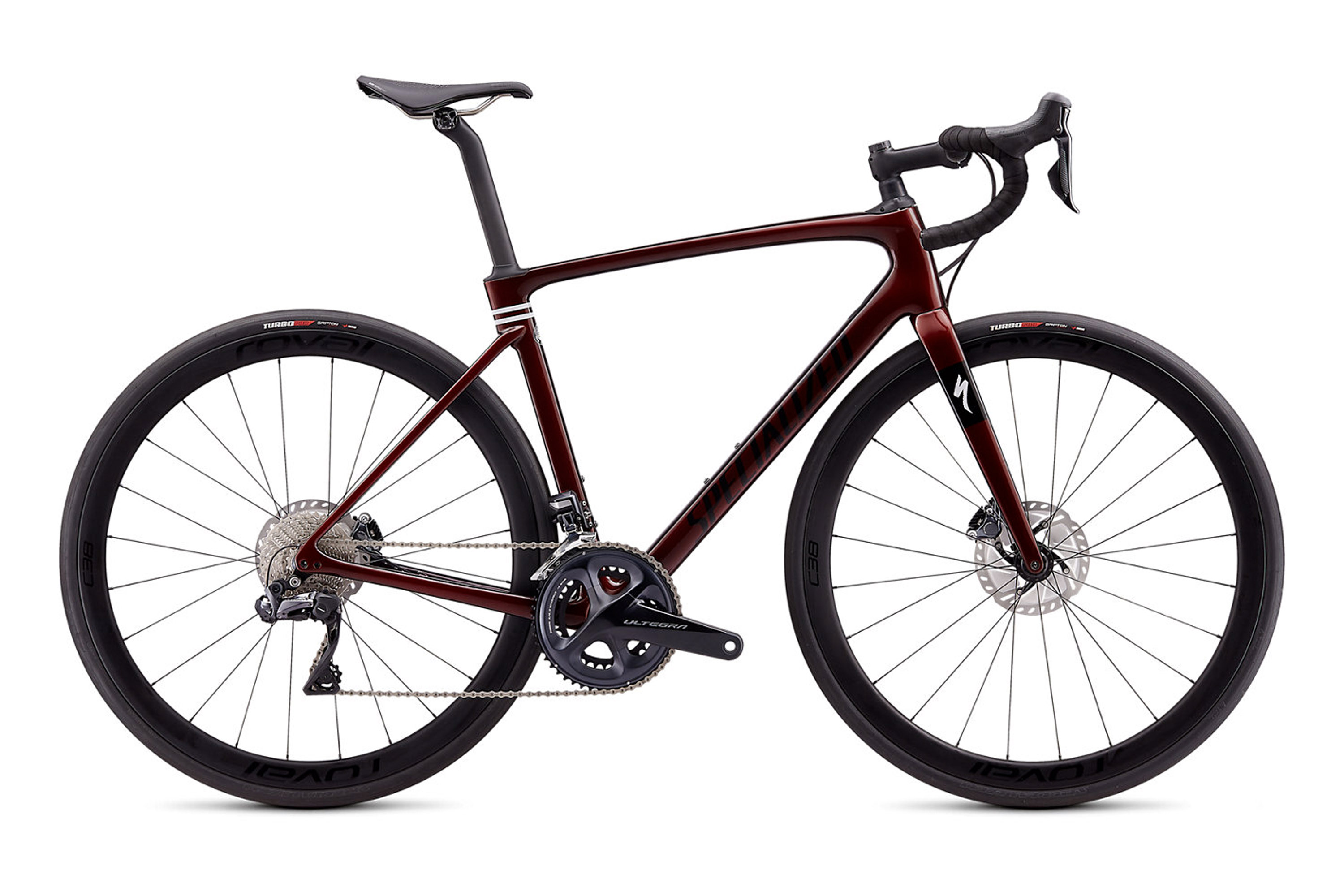
Specialized Roubaix Expert
Specifications
Reasons to buy
Reasons to avoid
The Specialized Roubaix was the first commercially available endurance road bike when it was launched back in 2004. With a slightly more relaxed geometry and taller head tube, early versions of the Roubaix featured Zertz inserts, said to absorb road buzz — their effectiveness is still up for debate.
The Roubaix has come quite a long way since then, now featuring the Future Shock. Designed in collaboration with McLaren, the Future Shock is now in its 2.0 version and features a hydraulic piston inside the head tube which provides 20mm of travel, now with a dial to adjust the compression and rebound damping.
The cheaper models of the Roubaix (Comp and below) get a Future Shock 1.5, which is the same unit minus the adjustable damper. Specialized has also added a new D-shaped seat post at the back, complete with a drop-in clamp to maximise flex and create a more balanced ride quality front to back.
It's not as snappy as the Tarmac when you push on the pedals, but it does an excellent job of smoothing out square edges on the road. According to Specialized, the new Roubaix is more Aero than the Tarmac SL6 and lighter than a Venge. Like the Tarmac, it only comes with disc brakes and a unisex geometry, with the only difference between the men's and women's bikes being the touchpoints.
Raced by: Bora-Hansgrohe, Deceuninck-QuickStep, Boels Dolmans
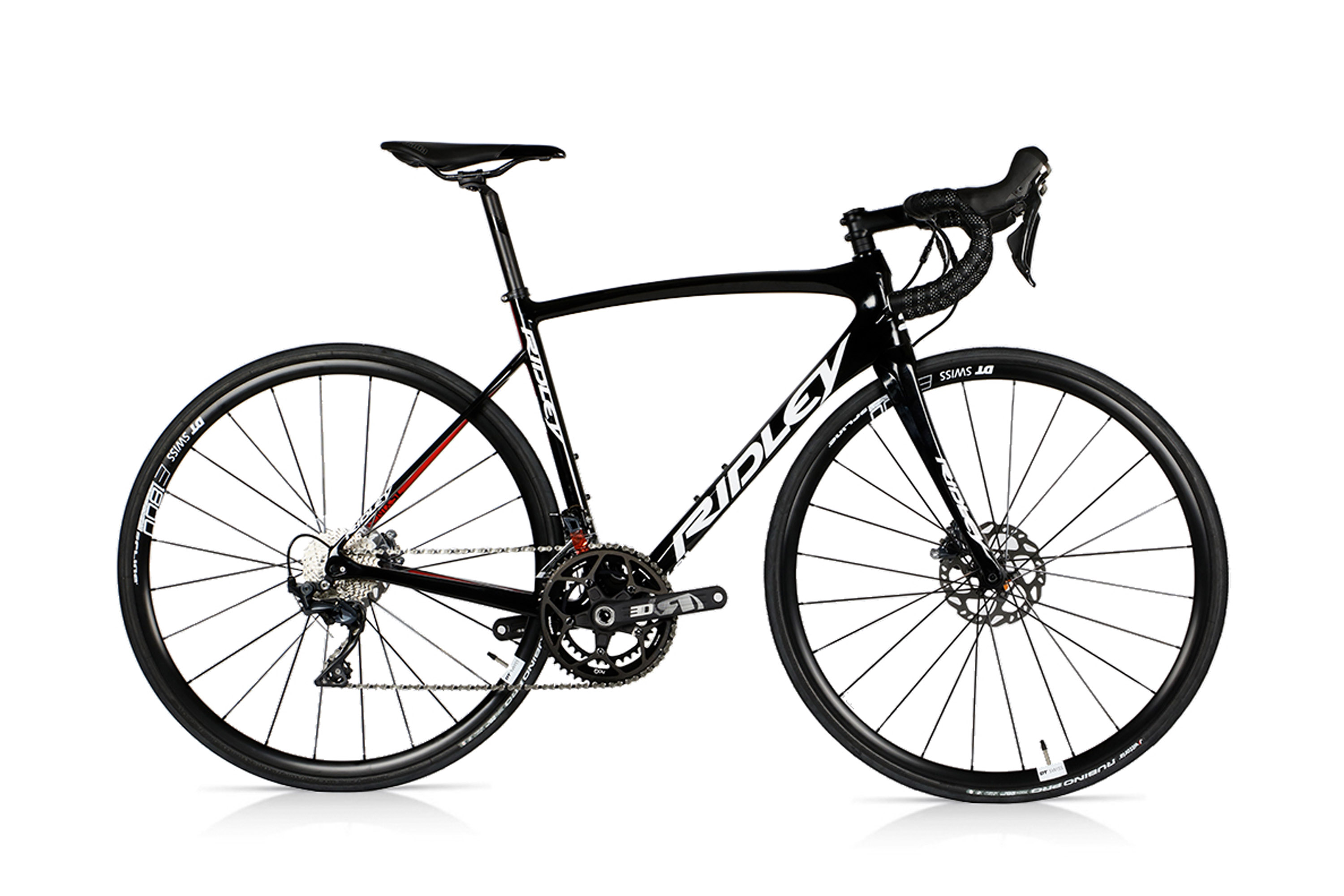
Ridley Fenix SL Disc
Specifications
Reasons to buy
Reasons to avoid
On paper, the Fenix SL looks like your typical Fondo bike, with sure-footed endurance geometry. In practice, the frame is on the stiffer end of the spectrum and makes for a ride quality that's anything but boring. There is precisely zero unwanted flex in the fork or laterally in the frame, a characteristic that's relatively commonplace in this category of road bikes. With dropped seat stays, the bike isn't harsh, however, we're not sure we'd describe it as a comfortable ride.
We'd argue among a field of endurance bikes, most of which look like they've been hit with the ugly stick, the Fenix SL, even with its chunky slightly aero tubing, is a pretty good looking bike.
It's not particularly light on the scale, but the Fenix is an endurance roadie that isn't willing to trade comfort for boring or sluggish ride quality.
Raced By: Lotto Soudal
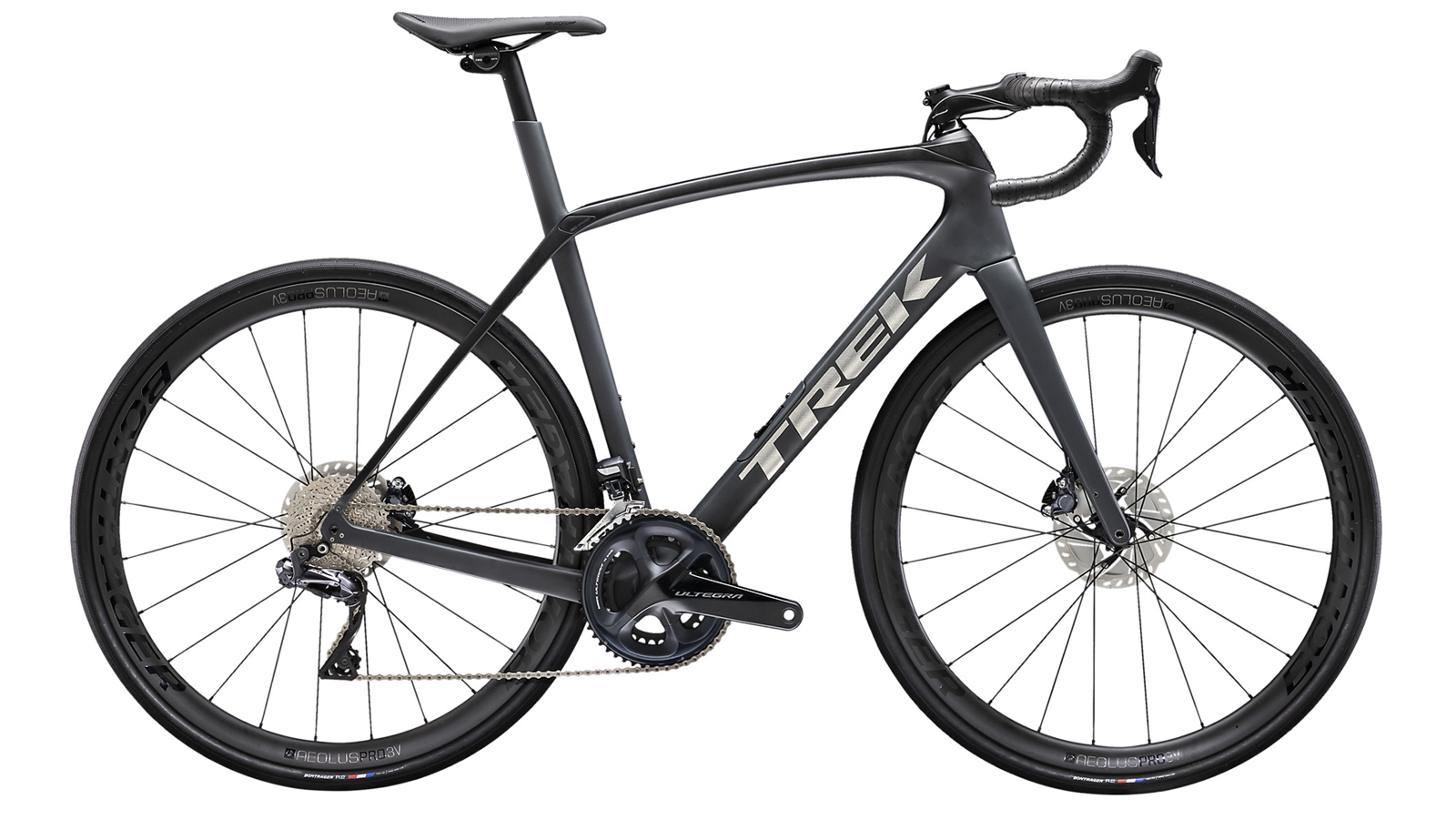
Trek Domane SL 7
Specifications
Reasons to buy
Reasons to avoid
The third generation of the Trek Domane carries the dual front and rear IsoSpeed technology. The top-end SLR models borrow the Madone's top tube mounted adjustable pivot, while the rest retain the standard inbuilt flex point. Trek say the new Domane is more aero than its predecessor, with Trek claiming it's a full minute per hour faster than the previous version - although at what power output, we cannot be sure.
Trek has fully committed the Domane to disc brakes and the result is that it can accept up to 38mm tyres, or 35mm with a fender. At the front, there is a nifty cable guide mounted under the stem; it's not quite as clean as the internally routed options, but not having to run cables and housing through handlebars and stem make maintenance and changes to bike fit considerably easier.
The Domane also features a clever down tube storage box that allows for tools and a spare tube to be stored in the frame inside a plush tool roll. The full Ultegra SL6 version pictured is built around Trek's H2 Endurance Fit, however, if you spring for the Project One SLR, the slightly more aggressive H1.5 is available. Trek has also ditched the gender-specific geometries, with the only difference between the gendered bikes being the touchpoints and paint jobs.
Raced by: Trek-Segafredo, Trek-Segafredo Women
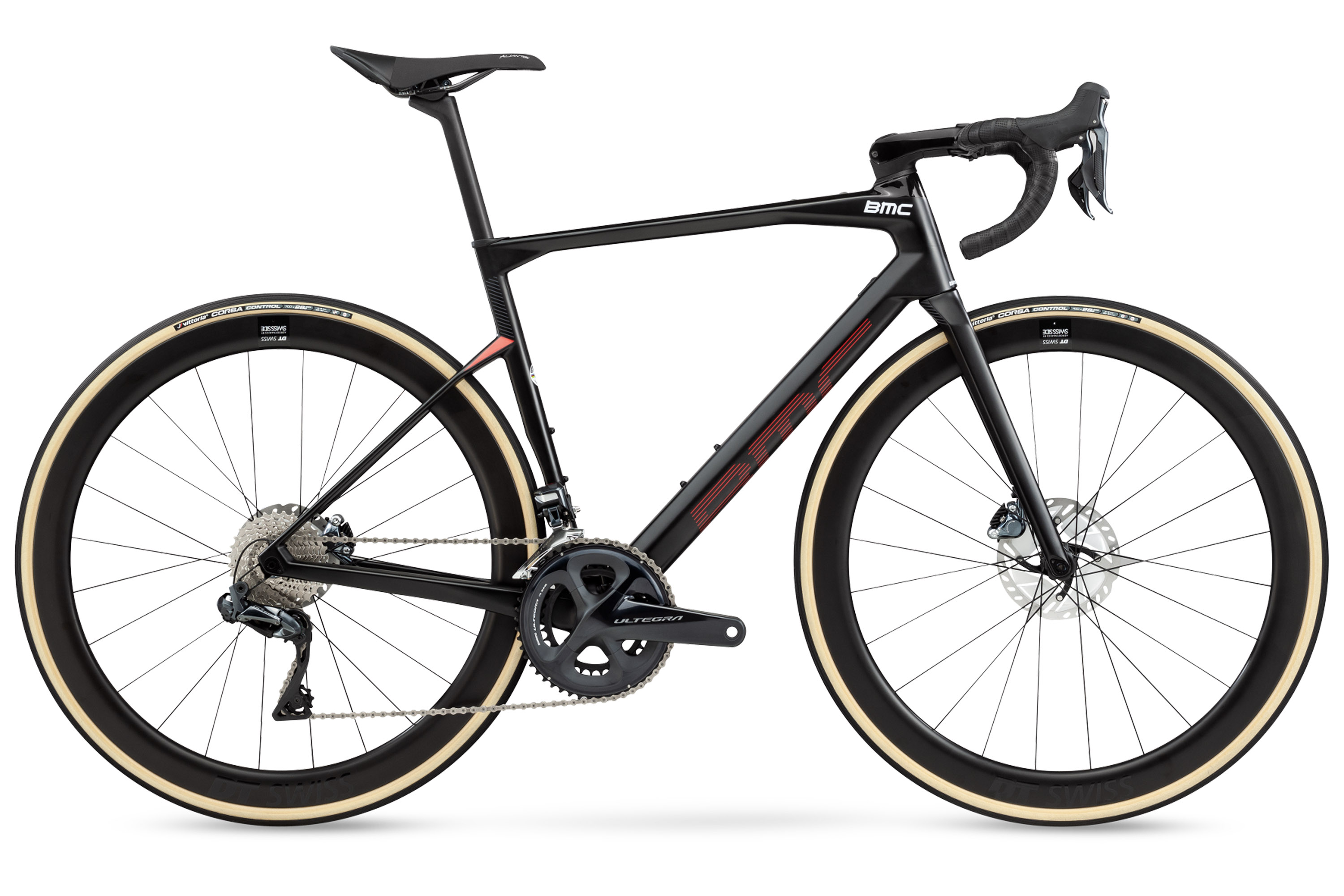
BMC Roadmachine 01 Four
Specifications
Reasons to buy
Reasons to avoid
At first glance, the BMC Roadmachine looks identical to the Teammachine racer, but closer inspection reveals a higher stack, shorter reach, softer ride and room for fat tyres. Even with the more relaxed geometry the Roadmachine still retains much of is racier cousin's efficiency and snap when pressure is applied to the pedals, but with slightly more forgiving steering characteristics.
The frame is made using the TCC (Tuned Compliance Concept) Endurance lay-up, which BMC says is designed to take the edge off rough roads. BMC has also employed what it calls Angle Compliance technology, which is marketing-speak for flex built into the fork, seat stays and seat post. The Roadmachine is where BMC first employed its integrated cockpit design, so it's no surprise to see it here and we love the addition of mounts for a top tube food/storage box so your pre-knock Haribo can be at hand at all times.
There is enough room in the frame for 33mm tyres so even though 'road' is in the name, nothing is stopping you from taking the Roadmachine past where the pavement ends. At the front, the new asymmetric fork is said to be ten per cent stiffer, while the back features the brand's dropped seat stays. The trouble, however, is the BMC sized price tag.
Raced by: NTT Pro Cycling
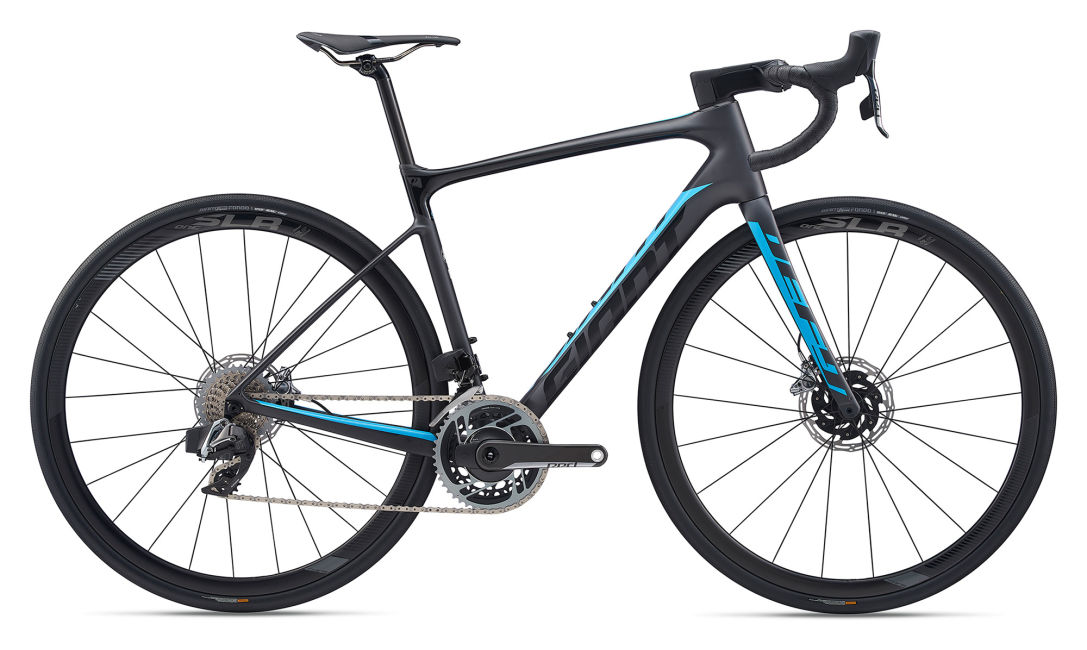
Giant Defy Advanced Pro 0
Specifications
Reasons to buy
Reasons to avoid
Since it was introduced in 2009, Giant's Defy has consistently been the brand's top-selling bike — it was also the first road bike to be offered exclusively in disc brakes. With only minor refinements to the geometry over the years, every other aspect of the bike has been improved from the D-Fuse seat post and handlebar to the oversized and tapered OverDrive 2 steerer tube.
The Defy Advanced sees an updated rear end with a slight curve in the seat stays to promote deflection. To balance out the plush rear end, Giant has adapted the D-Fuse technology for the front of the bike. The tops are now D-shaped like the seat post and Giant says the amount of flex can be customised by rotating the bar in the stem.
With these comfort features the remainder of the front triangle is robust with Giant employing its beefy Megadrive down tube and PowerCore BB shell, similar to what's seen on its race bikes. For a period in time, the Defy was the lightest frameset in Giant's range, but now made from the brand's second-tier carbon, it has gained a bit of weight.
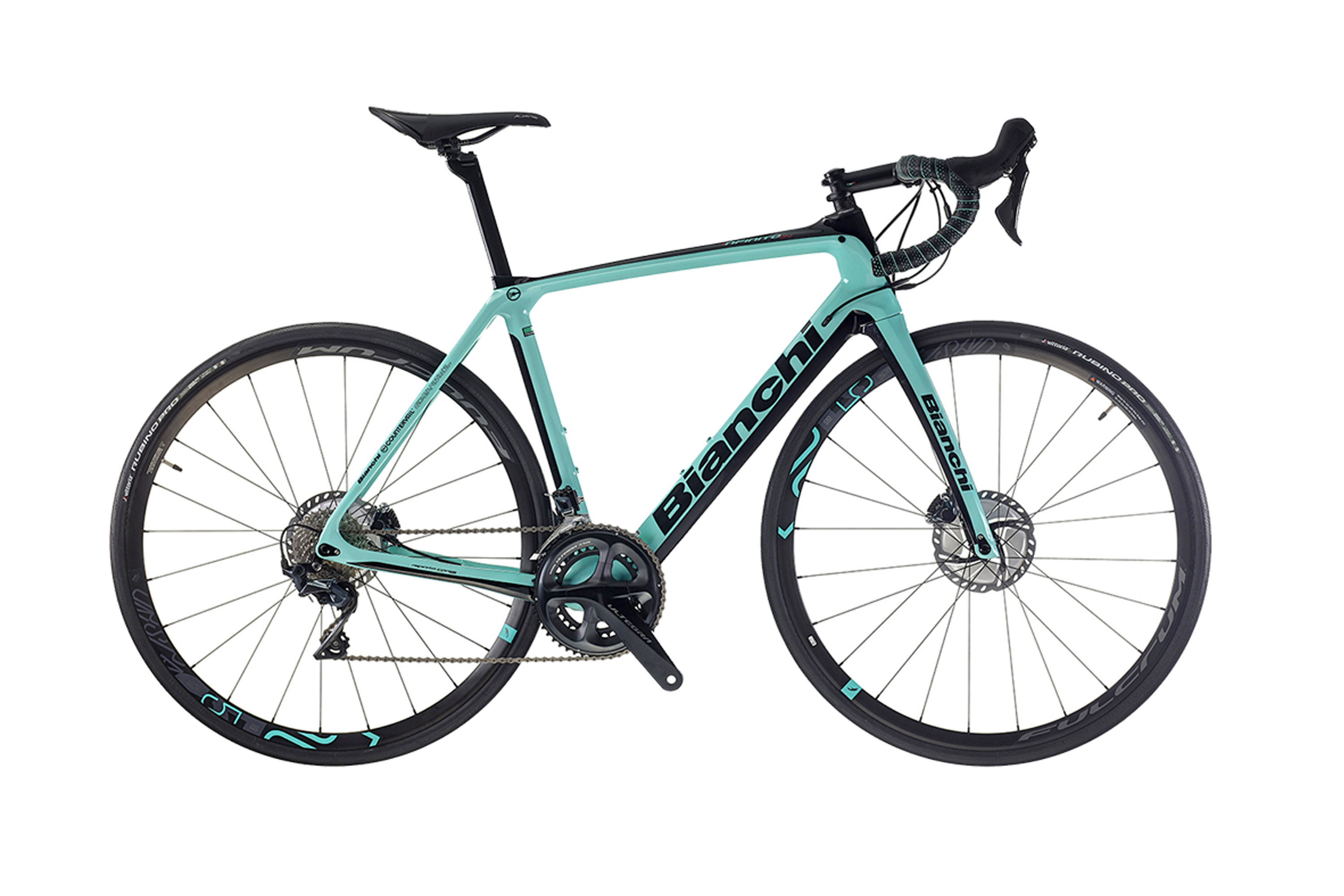
Bianchi Infinito CV
Specifications
Reasons to buy
Reasons to avoid
While Bianchi's Infinito CV offers a more relaxed and upright riding position, it's anything but boring. The handling is sharp, but the bike is a tad more reluctant to change line than the racy Oltre XR4 or Specialissima climbing bike.
Bianchi has borrowed a good bit of the geometry from its racing bikes, but added ~20mm of stack and subtracted ~10mm from the reach (depending on the size), shifting a bit of weight away from the front wheel, but maintaining the steep angles.
Bianchi has also borrowed a bit of the aero tubing from the Oltre, and the frame gets the Brand's Countervail carbon, which uses a viscoelastic resin to insulate your body from road noise - aka vibrations. We'd argue the effect is a bit less noticeable on an endurance platform because, by design, there is more comfort built into the frame.
Even with the frame designed with more comfort in mind, it's not flexy. With beefy tube shapes and a large bottom bracket shell, there is no power lost out of the saddle or climbing. Specced with a Shimano Ultegra groupset, Bianchi has also opted for 160mm rotors meaning there is oodles of braking power accessible with a single finger.
Raced by: Team Jumbo-Visma
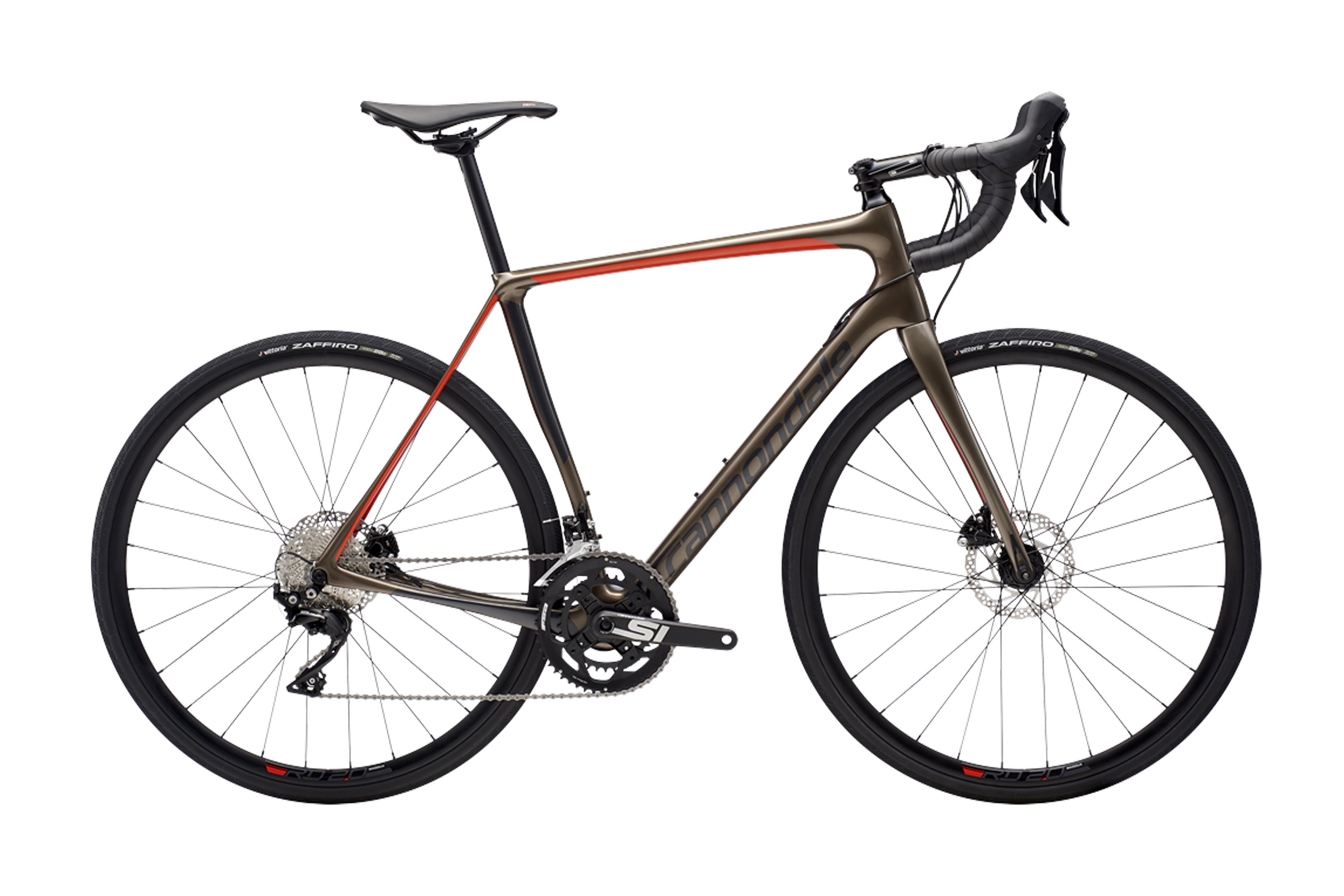
Cannondale Synapse Carbon 105
Specifications
Reasons to buy
Reasons to avoid
Cannondale's Synapse was made stiffer last year, with engineers honing in on the head tube and bottom bracket. It's disc-specific with thru-axles, has improved cable routing, more tyre clearance and a geometry that offers more uniform ride characteristics across the range.
In previous years the Synapse had been a touch flexy under power, but Cannondale has nipped that in the bud and the brand tells us the new frame has the same head tube stiffness as the SuperSix EVO. It has a slightly longer and lower position than the Roubaix or Domane, and thus, its handling characteristics are a bit more aggressive. To keep things comfortable, Cannondale has built the bike with its SAVE micro-suspension, which is just a fancy way of saying that the flex points are built into the rear triangle, seat post, and fork.
Even with a Shimano 105 spec, the Synapse comes with Cannondale's lightweight HollowGram SL crankset and is the first model to come exclusively with disc brakes. The frame will take up to a 32mm tyre and there are even hidden fender mounts on the rear seat stays.
Raced by: EF Pro Cycling
Carbon road bikes explained
How carbon road bikes are made
Carbon fibre is a bit of a wonder material because it can be moulded into just about any shape, and tuned to be stiff in one plane and flexible in another. With these properties, it's heavily used throughout the bike industry and we see it in everything from frames down to brake levers.
There are vast differences in the quality of carbon road bikes and components, and this ultimately comes down to the layup. Most carbon road bikes are made using pre-preg carbon fibre sheets; basically, the fabric is pumped full of uncured resin and shipped on massive rolls which are cut into the individual pieces that will be moulded into a bike.
Many brands use the same manufacturing facilities in Asia to produce all but their most premium bikes, and while certain details and processes may vary from brand to brand, the main bullet points of creating a carbon road bike frame are the same.
Sheets of pre-preg carbon fibre are hand laid into or around a mould and placed into a heated press, which is assisted by air bladders. Solid forms compact the layers of carbon together; spreading the resin through the frame, removing gaps and voids, and squishing out the excess. Then the frame is put into what equates to a giant pottery kiln where the resin is cured, and then the frames are sanded and painted.
The layup of a carbon road bike is essentially a really difficult 3D jigsaw puzzle with upwards of 400 individual pieces and the order in which they are put together will ultimately define the ride characteristics. Depending on the orientation of the fibres, using the same mass and modulus of carbon can yield a rigid structure or one that is noodly and flexible.
Woven vs Unidirectional
There are two main types of carbon, woven and unidirectional.
As you can probably guess, woven carbon sees the fibres knitted into a fabric, crisscrossing each other, allowing the material to be stiff in more than one plane. Woven carbon is used in areas where there are lots of different directional forces coming through the frame like the head tube and the bottom bracket and also around holes that have been drilled into the frame, like cable ports and bottle cage mounts.
On the other hand, with unidirectional carbon, all the fibres run parallel. This is what's used throughout the majority of the frame because sheets of unidirectional carbon can be laid on top of one another to combat specific directional forces.
Modulus
The modulus refers to the stiffness of the individual fibres. Higher modulus carbon is accomplished by refining each fibre to make it smoother and thinner allowing for higher tensile strength. While high modulus carbon is stiff, it's also brittle, and a bike made of exclusively high modulus carbon would likely break on the first impact, whether that be from road debris or a crash. Lower modulus carbon isn’t as stiff, but it is also less delicate.
No matter the frame, it will be made from a mix of different modulus carbon, strategically placed throughout for the best possible performance and strength.
Monocoque
A french term meaning single shell, a monocoque is a structural system where loads are supported through an object's external skin, like an egg — or a bicycle.
When the term is applied to bicycles, it's a fancy way of saying the entire frame is moulded in one piece. True monocoque frames are becoming increasingly rare, and in most cases, the front and rear triangles are manufactured in two separate pieces and then bonded together. When you see a brand using a term like semi-monocoque or modular monocoque, this is how the frame is made.
What to look for in a carbon road bike
Our general advice when looking to buy a road bike is to spend as much as you can on the frame and worry less about the components bolted onto it. It's easy to upgrade wheels, handlebars and groupsets, but you're stuck with the frame.
Geometry
We've split our favourite carbon road bikes into two categories, race bikes and endurance bikes. While you’ll likely see a crossover in terms of technology and features, these bikes are designed to do separate things, and the geometry will vary to help in achieving these goals.
Race bikes are designed to go fast, which can sometimes come at the expense of things like comfort. A race bike's geometry will have steep angles for fast steering and facilitate a long reach and low stack to achieve an aerodynamic position. To get the most out of a race bike, you need to be pretty flexible.
Endurance bikes feature a more upright geometry, slacker angles and plenty of built-in comfort technology. As things have progressed, quite a lot of new technology gets its start on endurance bikes before it's then adapted onto a brand's race bikes. You’ll often see pro teams don endurance bikes for the cobbled classics, not only for the additional comfort but for the slower handling that makes maintaining control through the bumpy and slippery cobbled sections slightly less herculean.
A lot of these bikes will feature aerodynamic cues, but if you're looking for out and out speed, our guide to the best aero road bikes will provide the fastest, most aerodynamic bikes available.
Brakes
Disc brakes have been utilised for years in just about every other cycling discipline other than road bikes because of their superior performance in all conditions and the additional tyre clearance they allow. The brakes and rotors themselves may weigh a bit more than calipers, but they also allow for light rims because there is no brake track needed.
Most road bikes are available in both rim and disc varieties, but unless you've got a stable of the very best road wheels in your garage, we'd recommend seriously considering discs brakes. With this, most disc-equipped road bikes have swapped to 12mm thru-axles, not only for a more secure wheel to frame connection, but the end to end lateral stiffness is vastly improved.
Integrated cockpit
With most bike brands now having an in-house or partner components brand, quite a few high-end bikes come with one-piece bar and stem combos. They have a definite cool factor while allowing for cables to be fully hidden from the wind which makes them aero and they are a bit lighter than their standard bar and stem.
But changing cables can be an absolute nightmare, and even with brands offering plenty of handlebar widths and stem lengths, if you can't find the numbers that match your specific fit needs or a bar shape you like, you are out of luck.
Get The Leadout Newsletter
The latest race content, interviews, features, reviews and expert buying guides, direct to your inbox!
Based on the Gold Coast of Australia, Colin has written tech content for cycling publication for a decade. With hundreds of buyer's guides, reviews and how-tos published in Bike Radar, Cyclingnews, Bike Perfect and Cycling Weekly, as well as in numerous publications dedicated to his other passion, skiing.
Colin was a key contributor to Cyclingnews between 2019 and 2021, during which time he helped build the site's tech coverage from the ground up. Nowadays he works full-time as the news and content editor of Flow MTB magazine.